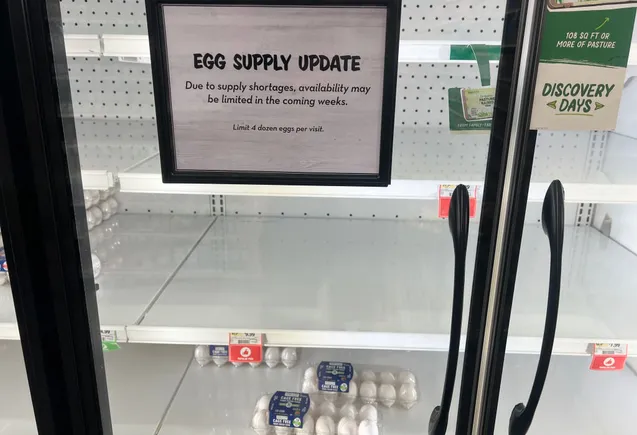Avian Influenza Outbreak Leads to Sky-High Egg Prices
Consumers nationwide are facing empty grocery store shelves and soaring egg prices due to a worsening avian influenza outbreak. The U.S. Department of Agriculture warned that prices are unlikely to decrease anytime soon as farmers are forced to cull millions of birds.
Currently, egg prices are at near all-time highs, with the average cost of a dozen Grade A large eggs at $4.15 in December, according to the Bureau of Labor Statistics. This is a 37% increase from the previous year but slightly lower than the peak of $4.82 in January 2023.
The USDA predicts that egg prices could rise even further in 2025, with consumer costs expected to increase by 20.3%. Meanwhile, other food categories have seen more moderate price growth compared to historical averages.
Since 2022, the avian influenza outbreak has resulted in the death of over 145 million birds in the U.S. The infection rate has surged in recent months, affecting approximately 33 million birds in December and January, leading to a 3.7% reduction in the conventional egg-laying flock.
Due to the significant loss of birds, there is a shortage in egg supply, resulting in a sharp increase in consumer prices. This has also been advantageous for some of the largest egg producers in the country.
To manage the supply shortage and prevent panic-buying, grocery stores have started limiting consumer purchases and maintaining prices at record highs. This has sparked political discussions, with President Donald Trump and Democratic senators addressing the issue of rising food prices.
In a letter to Trump, lawmakers expressed concerns that grocery stores and egg producers may be exploiting the bird flu outbreak to drive up prices and generate substantial profits. They urged action to address price-fixing in the food industry, including measures to support smaller egg suppliers.
Despite the challenges posed by the bird flu outbreak, egg producers have made efforts to mitigate supply losses. While non-organic, cage-free egg producers initially lost 22 million hens, they were able to recover a significant portion of those losses by the end of the year.
Overall, farmers are working diligently to protect their flocks from disease and maintain egg production amidst the ongoing threat of bird flu.

